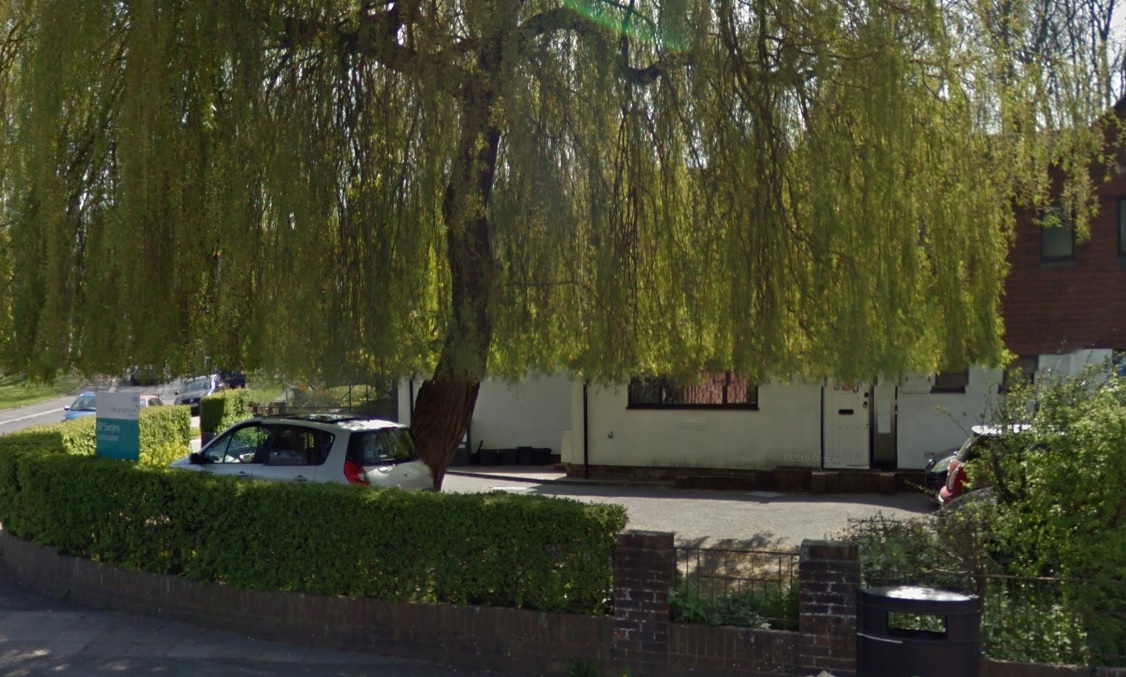A planning inspector has turned down an appeal by a developer to build a block of 33 student flats on the site of an old doctor’s surgery in Brighton.
John Talbot, 66, who lives on the Isle of Man, wants to build the flats on the site of the Willow House surgery on the corner of Heath Hill Avenue and Auckland Drive, in Bevendean.
The surgery – an old bungalow – has been demolished. The willow tree is still standing although it is expected to be felled and a replacement planted in a different part of the site.
Planning inspector Janette Davis said that the proposed three-storey building did not include a replacement surgery, clinic or comparable community facility.
She said: “The appellant does not dispute that the proposal would lead to the loss of a community facility but advises that former patients of the surgery were relocated to other surgeries and that a number of surgeries in the area are accepting new patients.”
Despite this, she said: “The proposal would result in the unjustified loss of a community facility.”
The planning inspector also said that the proposed building was “overwhelming” and “incongruous” and jarred with its more traditional would-be neighbours.
She said that the student flats would have a negative effect “on the character and appearance of the surrounding area”.
She said: “The design and form of the proposed development would contrast sharply with the existing character of the area.
“The three-storey elements, particularly where full height and unrelieved by any form of setback, would appear highly dominant in the street scene and would appear incongruous and out of character with the surrounding area.
“The scale of the development as a whole would visually overwhelm the adjacent bungalows.
“The design includes large expanses of brickwork which are largely unrelieved by fenestration or other detailing, resulting in a rather stark appearance, out of character and jarring with the more traditional style of properties in the area.”

The planning inspector looked at “the effect of the proposal on the living conditions of the occupiers of neighbouring properties”.
She said: “The scheme provides for 33 students. It is reasonable to assume that this number of students would give rise to comings and goings on site and that this could be late at night.
“This would change the character of the use from the previous medical centre where late night activity was limited.
“There would also be intensive periods of activity when students move in and out of the accommodation at the start and end of the academic year.
“Taking into account the quiet residential character of the area it is likely that harm to the living conditions of nearby occupiers would be likely to occur.
“I note that the previous appeal schemes were accompanied by a unilateral undertaking that required a management plan to be entered into with one of the nearby universities.
“This would ensure that unacceptable behaviour and disturbance could be addressed, helping to protect the living conditions of neighbouring properties.

“While a draft management plan has been provided, this does not appear to have been formally entered into with either university and I have not been provided with a planning obligation to secure this.
“In these circumstances I cannot be assured that adequate steps to address potential disturbance arising from the use would be implemented in this case.”
As a result, she said, the proposal would be contrary at Brighton and Hove City Council’s planning policy “which seeks to protect the amenity of existing residents”.
The planning inspector also said that the council was right to demand a “developer contribution” – also known as a section 106 payment – of just over £18,000 towards local transport measures.
These – along with a travel plan – would be reasonably required to offset the extra journeys generated by 33 students living in proposed block.
She said: “The proposal would result in the unacceptable loss of a community use.
“It would also be harmful to the character and appearance of the area and would result in material harm to the living conditions of the occupiers of adjoining properties.
“The benefits arising from the provision of student housing, some of which would be suitable for those with reduced mobility, would not outweigh the harm identified in these respects.
“The proposal therefore conflicts with the development plan and there are no material considerations that should indicate a decision otherwise.”
In conclusion, she said, the appeal by Mr Talbot and his company, Heath Hill Student Developments, was refused.









